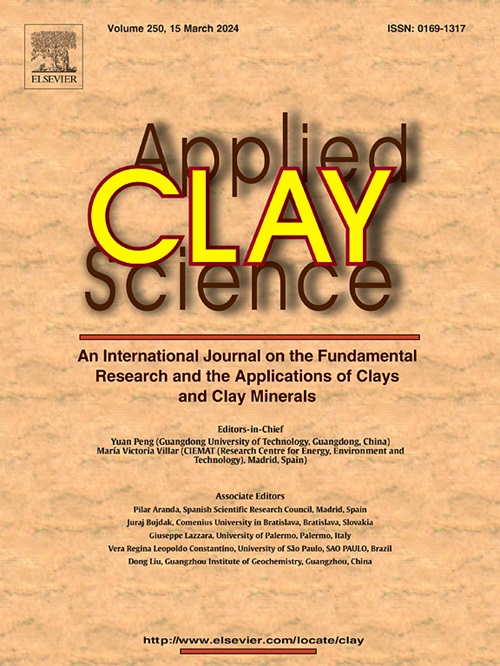Multiscale and quantitative study of thermal conductivity in shale using TDTR measurements and homogenization techniques
IF 5.3
2区 地球科学
Q2 CHEMISTRY, PHYSICAL
引用次数: 0
Abstract
Elevated temperatures in shale reservoirs are unavoidable during deep shale gas extraction. Thermal conductivity is an essential determinant influencing numerous heat-related activities. Nonetheless, comprehending the thermal conductivity of shale is difficult due to its varied mineral compositions, intricate microstructural characteristics, and the absence of direct measurement techniques. This study addresses these problems by utilizing Time-Domain Thermoreflectance (TDTR) technology, which offers accurate measurements of the thermal properties of mineral phases (at micrometer scale) in shale, such as clay and quartz. The test findings indicate that the clay matrix demonstrates a thermal conductivity of 1.98 W/(m·K) parallel to the bedding and 1.65 W/(m·K) perpendicular to it, whereas quartz displays an isotropic value of 6.94 W/(m·K) in both directions. A two-step homogenization methodology has been developed that accurately represents the layering distribution of grains and accounts for the anisotropic behavior of the clay matrix, integrating the Mori-Tanaka method within lamina and series-parallel models within lamina. The precision of this homogenization process is confirmed by further macroscopic measurements utilizing the laser flash technique, exhibiting an error margin of 5 %. Additionally, quantitative study evaluates the influence of four variables on the anisotropy of thermal conductivity by ANOVA. The findings indicate that the anisotropy of thermal conductivity is predominantly influenced by the orientation of the clay matrix.
利用TDTR测量和均质化技术对页岩导热系数进行多尺度和定量研究
在深层页岩气开采过程中,页岩储层温度升高是不可避免的。导热系数是影响许多热相关活动的基本决定因素。然而,由于页岩的矿物成分多样,微观结构特征复杂,且缺乏直接测量技术,因此很难理解页岩的热导率。本研究通过利用时域热反射(TDTR)技术解决了这些问题,该技术可以精确测量页岩(如粘土和石英)中矿物相的热性质(微米尺度)。试验结果表明,粘土基质平行于层理的导热系数为1.98 W/(m·K),垂直于层理的导热系数为1.65 W/(m·K),而石英在两个方向上的各向同性值均为6.94 W/(m·K)。本文提出了一种两步均匀化方法,该方法将Mori-Tanaka方法与层内的串联-平行模型相结合,准确地表示了颗粒的分层分布,并解释了粘土基质的各向异性行为。这种均匀化过程的精度通过利用激光闪光技术的进一步宏观测量得到证实,误差范围为5%。此外,通过方差分析定量评价了四个变量对导热系数各向异性的影响。研究结果表明,导热系数的各向异性主要受粘土基质取向的影响。
本文章由计算机程序翻译,如有差异,请以英文原文为准。
求助全文
约1分钟内获得全文
求助全文
来源期刊

Applied Clay Science
地学-矿物学
CiteScore
10.30
自引率
10.70%
发文量
289
审稿时长
39 days
期刊介绍:
Applied Clay Science aims to be an international journal attracting high quality scientific papers on clays and clay minerals, including research papers, reviews, and technical notes. The journal covers typical subjects of Fundamental and Applied Clay Science such as:
• Synthesis and purification
• Structural, crystallographic and mineralogical properties of clays and clay minerals
• Thermal properties of clays and clay minerals
• Physico-chemical properties including i) surface and interface properties; ii) thermodynamic properties; iii) mechanical properties
• Interaction with water, with polar and apolar molecules
• Colloidal properties and rheology
• Adsorption, Intercalation, Ionic exchange
• Genesis and deposits of clay minerals
• Geology and geochemistry of clays
• Modification of clays and clay minerals properties by thermal and physical treatments
• Modification by chemical treatments with organic and inorganic molecules(organoclays, pillared clays)
• Modification by biological microorganisms. etc...
 求助内容:
求助内容: 应助结果提醒方式:
应助结果提醒方式:


